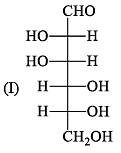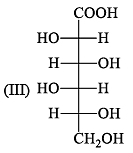Test: Biomolecules Level - 1 - Chemistry MCQ
30 Questions MCQ Test Organic Chemistry - Test: Biomolecules Level - 1
Which of the following pairs give posit ive Tollen’s test:
| 1 Crore+ students have signed up on EduRev. Have you? Download the App |
Specific rotations of freshly prepared aqueous solutions of I and II are +112 and +18.7, respectively. On standing, the optical rotation of aqueous solution of I slowly decreases to give a final value of +52.7 due to equilibrium with II. Under this state of equilibrium, what is the ratio II:I?
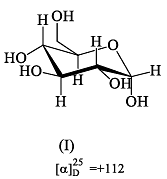


The titration curve of alanine hydrochloride is given below:
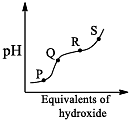
The position in the graph that corresponds to the isoelectric point of alanine is:
The absolute configurat ions at the two chiral centers in D-ribulose are:

Among the following compounds, which one on reduction wit h NaBH4 gives meso-compound:
Among α- and β-anomeric pairs which one is more stable:
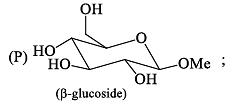
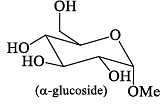


Among the D-glucopyranose forms given below, which is more stable:
Glycosidic linkage will be formed from among which of these reactions:
The below reaction a compound. From the sugars given below, identify the sugar that gives the same compound:
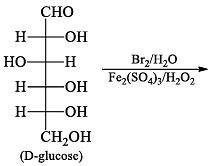
From the below list, identify the sugars which on reduction give the same glucitol:
Generally β-[D] glucose in more stable under H2O. But the solvent is changed to Cyclohexanol under Cyclohexanol. The stable form (major contribution) would be:
The structure of D-galactose is:
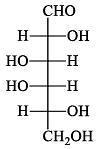
Which one of these structures is L-galactose?
The complementary strand of DNA for the following single stranded DNA sequence: 5' - A - T - C- A - T - G - C-3' is:
Synthesis of each molecule of glucose in photosynthesis involves:
The correct statement about the following disaccharide is:
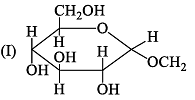

Cellulose upon acetylation with excess acetic anhydride/H2SO4 (catalyst ic) gives cellulose triacetate whose structure is:
|
35 videos|92 docs|46 tests
|


